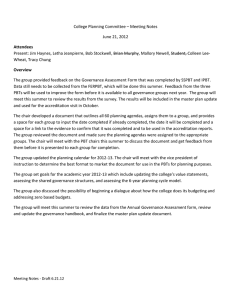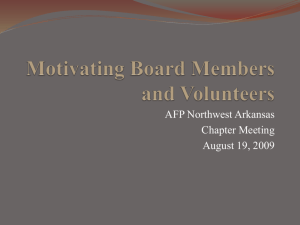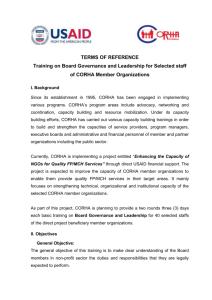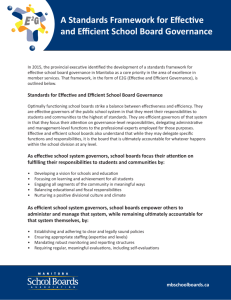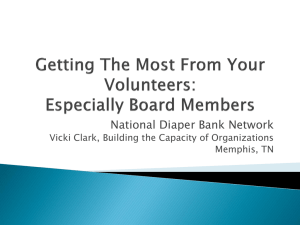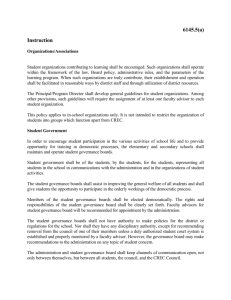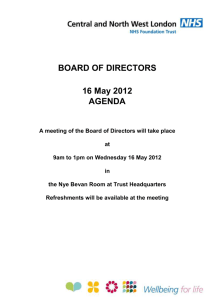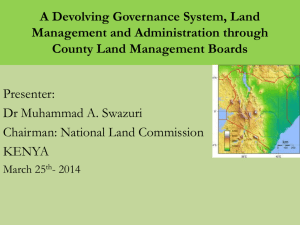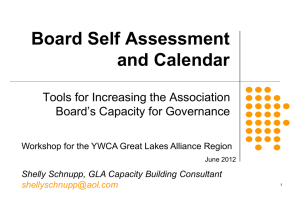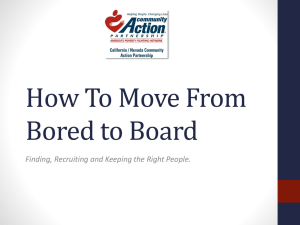Nine Keys for Reinvigorating Board Leadership
advertisement
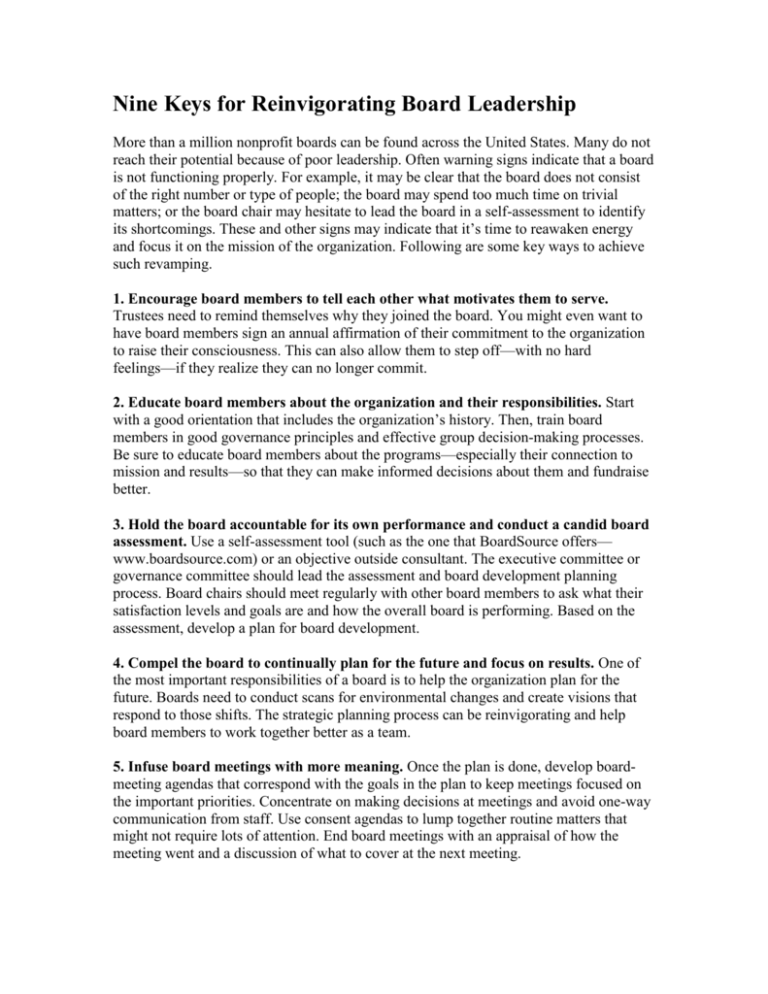
Nine Keys for Reinvigorating Board Leadership More than a million nonprofit boards can be found across the United States. Many do not reach their potential because of poor leadership. Often warning signs indicate that a board is not functioning properly. For example, it may be clear that the board does not consist of the right number or type of people; the board may spend too much time on trivial matters; or the board chair may hesitate to lead the board in a self-assessment to identify its shortcomings. These and other signs may indicate that it’s time to reawaken energy and focus it on the mission of the organization. Following are some key ways to achieve such revamping. 1. Encourage board members to tell each other what motivates them to serve. Trustees need to remind themselves why they joined the board. You might even want to have board members sign an annual affirmation of their commitment to the organization to raise their consciousness. This can also allow them to step off—with no hard feelings—if they realize they can no longer commit. 2. Educate board members about the organization and their responsibilities. Start with a good orientation that includes the organization’s history. Then, train board members in good governance principles and effective group decision-making processes. Be sure to educate board members about the programs—especially their connection to mission and results—so that they can make informed decisions about them and fundraise better. 3. Hold the board accountable for its own performance and conduct a candid board assessment. Use a self-assessment tool (such as the one that BoardSource offers— www.boardsource.com) or an objective outside consultant. The executive committee or governance committee should lead the assessment and board development planning process. Board chairs should meet regularly with other board members to ask what their satisfaction levels and goals are and how the overall board is performing. Based on the assessment, develop a plan for board development. 4. Compel the board to continually plan for the future and focus on results. One of the most important responsibilities of a board is to help the organization plan for the future. Boards need to conduct scans for environmental changes and create visions that respond to those shifts. The strategic planning process can be reinvigorating and help board members to work together better as a team. 5. Infuse board meetings with more meaning. Once the plan is done, develop boardmeeting agendas that correspond with the goals in the plan to keep meetings focused on the important priorities. Concentrate on making decisions at meetings and avoid one-way communication from staff. Use consent agendas to lump together routine matters that might not require lots of attention. End board meetings with an appraisal of how the meeting went and a discussion of what to cover at the next meeting. 6. Add some new board members and graduate some existing ones. Begin by having the executive or nominating committee determine whether the board needs to become bigger or smaller. If the board needs new members, have the committee identify board composition needs and then strategically fill slots. Cast a wide net for underrepresented groups to ensure diversity and try to seek younger up-and-comers, rather than overcommitted heavy hitters. If the board needs to shrink or you need to get rid of underperforming board members, consider using term limits or required rotation. You might want to develop a board alumni council to keep former board members involved. 7. Nurture future leadership. Board leaders should consciously mentor the next generation of leadership. All new board members must have the potential for assuming a leadership role during their tenure. Use committees as a way to provide opportunities for emerging leaders to take on more responsibility. Consider having multiple vice chairs so that you aren’t stuck if one can’t become chair. 8. Develop a synergistic board-CEO partnership. A good CEO-board chair relationship is like a good marriage: It is based on mutual respect, trust, commitment, and effective communication. Board and executive leadership need to work together to plan, set agendas and policies, act as ambassadors for the organization, and raise money. The CEO needs to be involved in any board development process, and the board chair must be kept abreast of major developments in the CEO’s areas of responsibility. 9. Consider alternative models for governance. Some say that conventional models for nonprofit governance may be broken, so trying to improve board performance within this context is like putting a Band-Aid on a huge wound. You might want to consider replacing typical models of governance with alternative ones. Some boards have eliminated committees and, instead, use ad hoc work groups that are time-limited and outcomes-focused. During the past decade, the John Carver policy-governance model has become more popular; it prescribes smaller, more disciplined boards that focus on policy means and ends and delegate more to the CEO. Other alternative models are nonhierarchal and consensus-oriented and structured like a cooperative, in which staff members participate and help lead the board. Paul Connolly is senior vice president, The Conservation Company, New York City, a consulting firm that specializes in nonprofit governance, management, and strategic planning. E-mail: pconnolly@consco.com.
